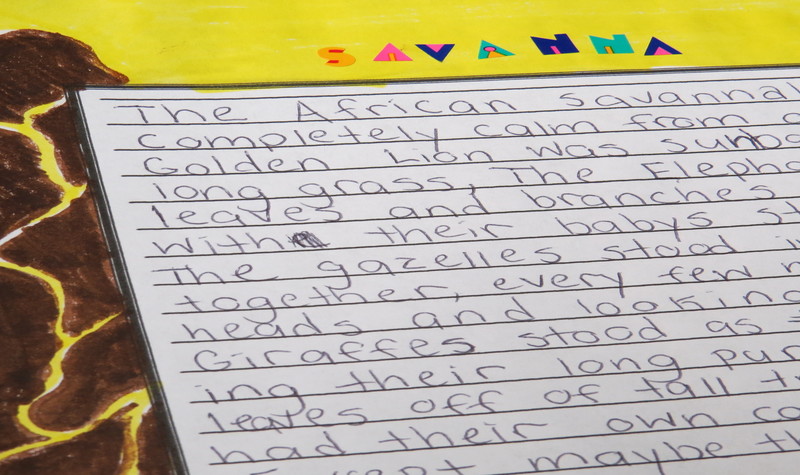The African Savanna intrigues and interests almost every student that I work with. There are so many animals in the African Savanna that kids love, such as lions, elephants, cheetahs, giraffes, zebras, flamingos…

*This post contains affiliate links. For more information, see my disclosures here.*
From afar the African Savanna seems quiet, and many times it is. But then, there are hungry lions and vexing hyenas to stir up the harmony and peace.
In other words, there’s a lot for kids to write about in this descriptive writing prompt! The animals alone get the kids excited to write. However, there are two specific things about this lesson that consistently motivate them to write each time I teach this lesson.
An Easy Art Accent
First, the easy art accents that they can add to their border peek their interest and get them excited about writing. Before I begin the lesson, I show the students the following art accent samples. (I give more details and ideas on how to complete these art accents after the writing lesson below.)
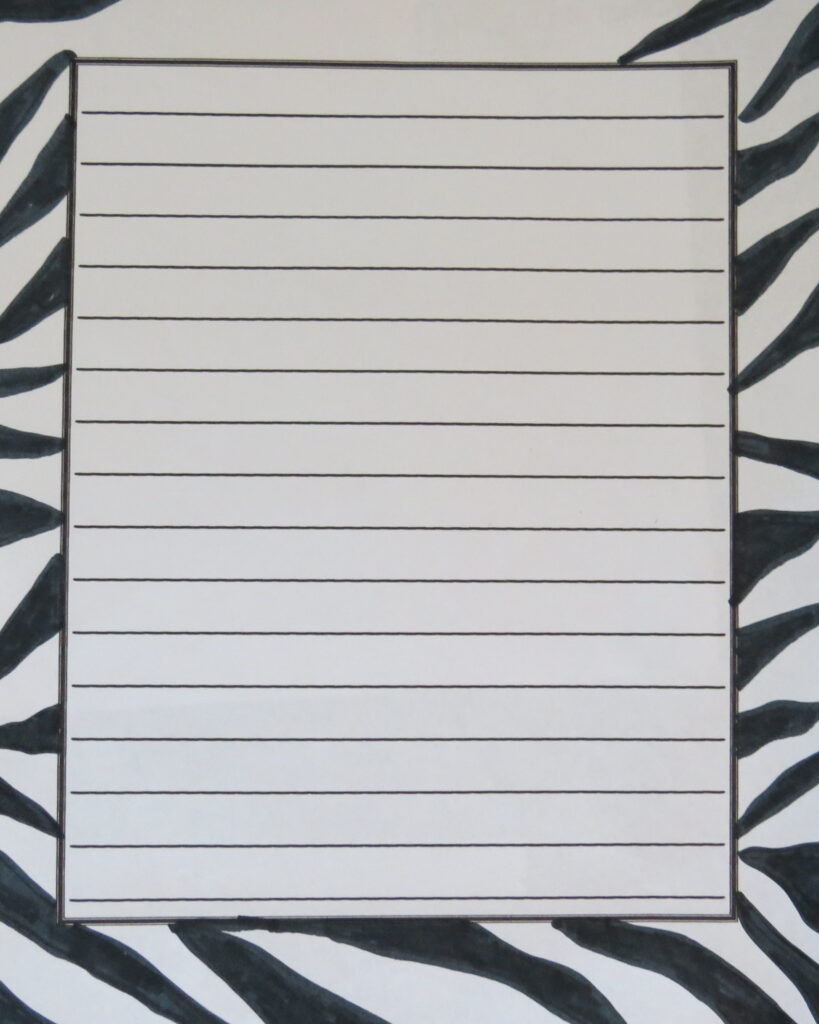
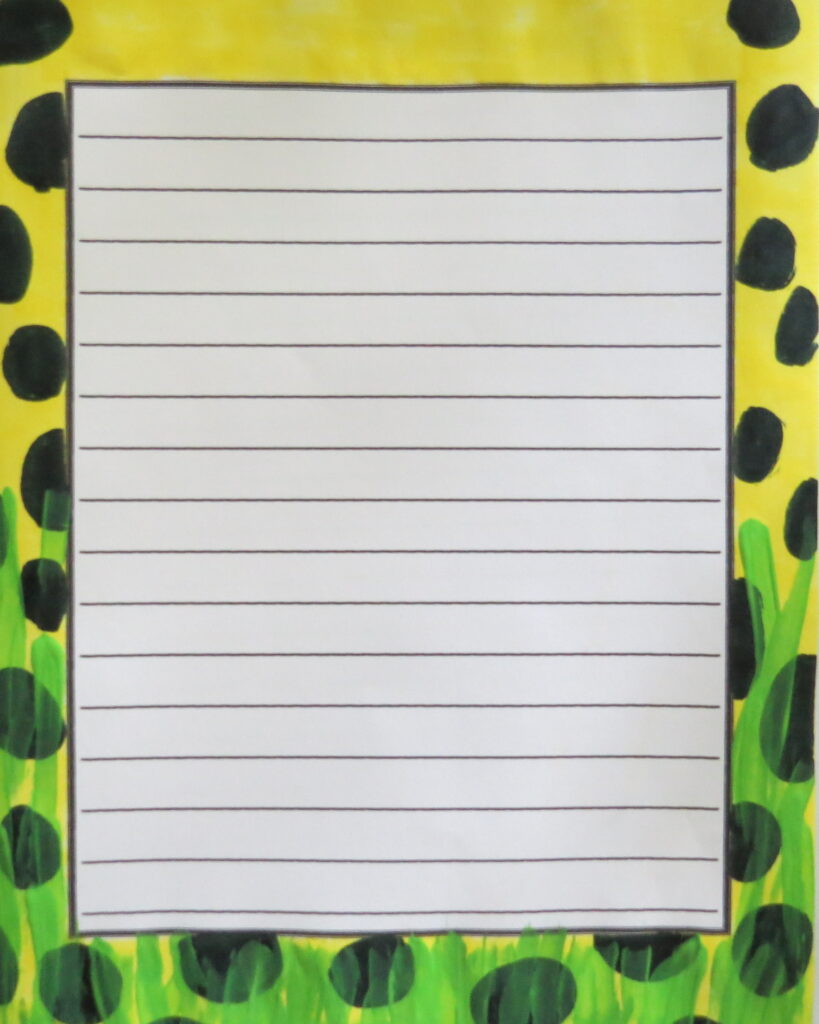
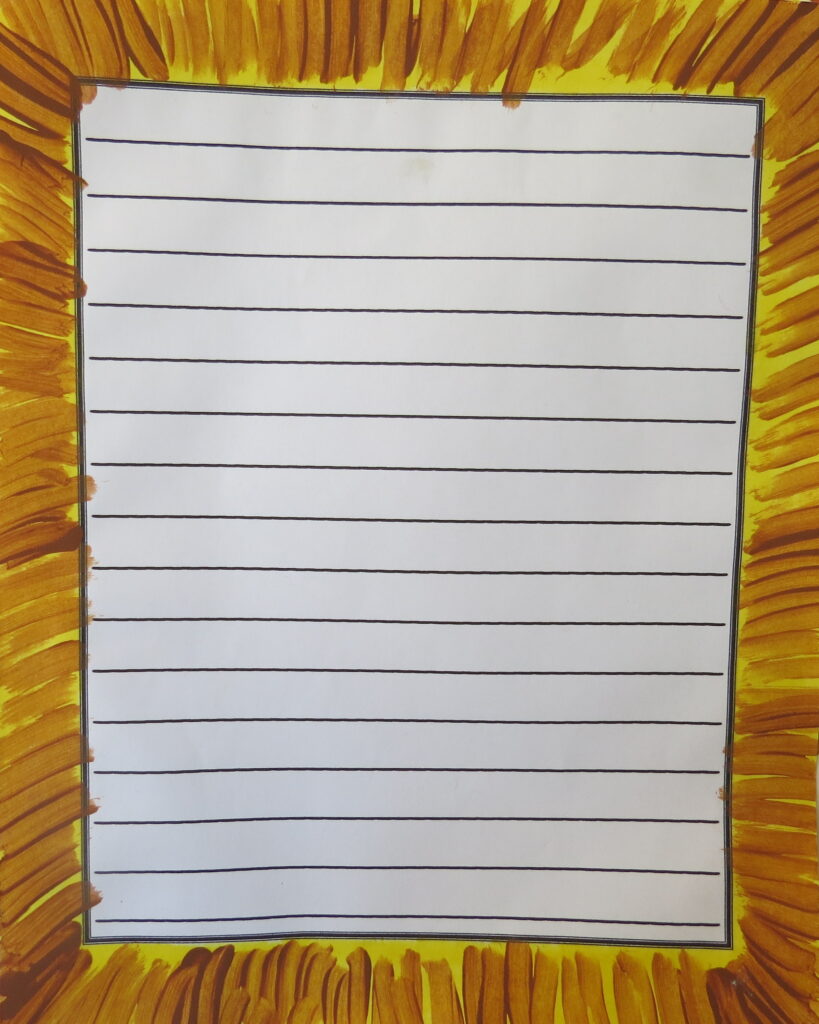
Students immediately start to think and chatter about which animal they want to represent around the border of their writing. Some writers choose more than one animal, dividing their border into two halves.
Moreover, I was delighted to see that one student created her own art accent and colored in a giraffe’s pattern around the border of her writing.
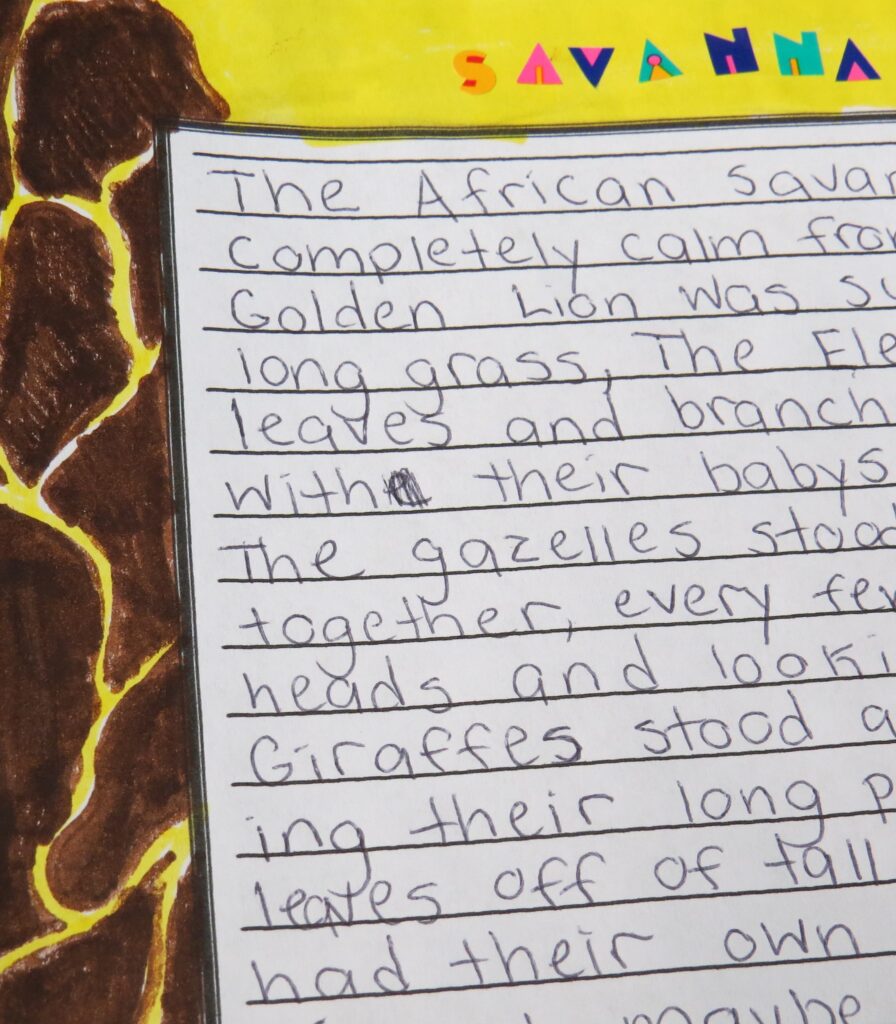
Easy art accents are a critical part of the guided writing lessons that I offer and post. They motivate kids to write and reward them for their work! Also, they add color and charm to any child’s story. Kids regularly love the simplicity and creativity of each art accent!
Ending With a Hook
The second thing that inspires the students to write this African savanna lesson is that they don’t have to write an entire story. I tell them that we are going to end the descriptive introduction with a hook to the rest of the story. This actually drives them crazy! I was surprised at the “OHs” and “AWWs” and “WHATs?! that I got when I first taught this lesson.
In the same way that books hook us and make us want to keep reading to find out what happens next, ending this writing lesson with a hook sent the children into a frenzy. They were flummoxed. It’s as if they couldn’t stop their brains from thinking of the next part of the story and instinctively they wanted to keep going and tell what happens next.
Indeed, their responses to the hook idea created an interesting and humorous twist to this writing lesson.
Thinking Descriptively
Above all, my goal for this lesson is to help students think and write descriptively. I want them to complete a detailed descriptive introduction in the 60 minutes that we have. This is often difficult for many students. Children don’t instinctively think or write descriptively. From my experience, I believe it is a skill that has to be taught.
Subsequently, helping children think and write descriptively actually helps them imagine and visualize detailed texts that they read. Just like writing helps very young children learn to write, writing stories and visualizing scenarios also helps older readers strengthen their comprehension skills. This point was stressed in my recent teaching license renewal courses from Professional Learning Board.
So, the arching purpose of this writing lesson is to help students think specifically about all the things that take place in the African savanna.
A Complete Story
On the other hand, if students want to keep going and finish an entire story that includes main characters, a problem and a solution after completing a descriptive introduction, by all means they are welcome to!
In fact, when I taught this lesson at our home school co-op, I turned the lesson into an entire story. The 5 sections to the story were:
- Describe the savanna
- Introduce the animal(s)
- All of a sudden, …
- Reaction/Action
- Solution/Conclusion
Here is one 1st Grader’s story that included a cheetah border.
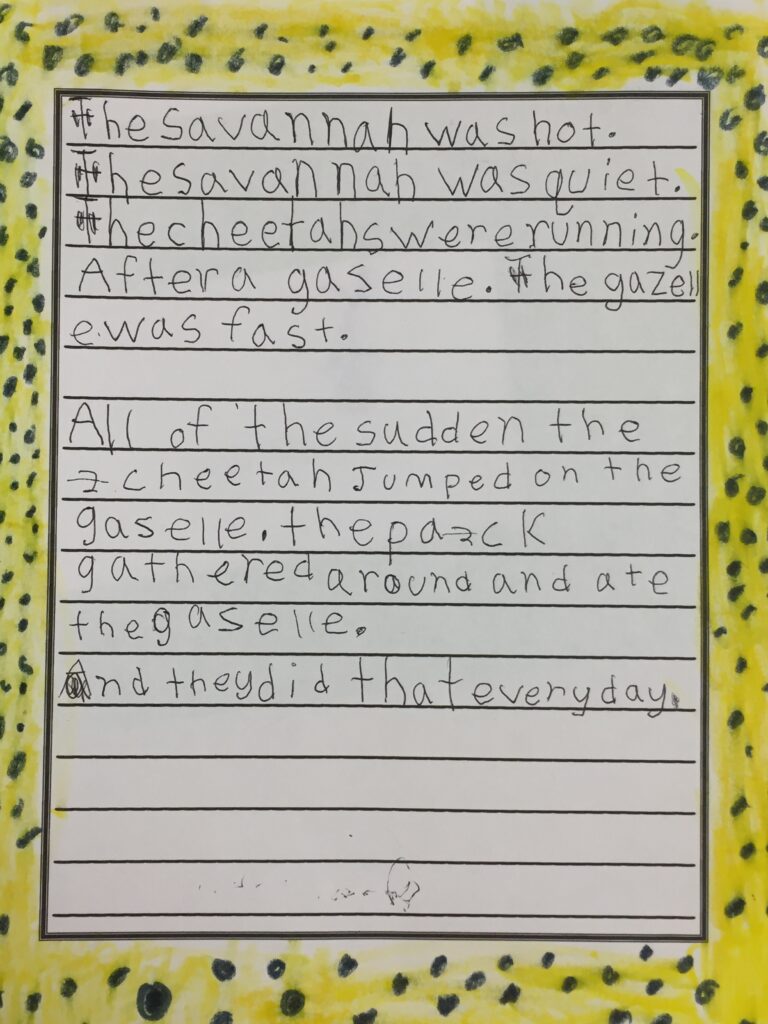
Now, on to our descriptive writing prompt!
Common Core State Standards
NOTE: This lesson can address the following Common Core State Standards: CCSS.ELA-LITERACY.W.4.3.D and W.5.3.D.
Now for the lesson!
To get a full understanding on how I conduct each writing lesson you may want to read the Writing Prompts Introduction post. The African savanna lesson outlined below (and all other prompts posted) will make more sense and be easier to follow and use.
Tell the Story Line
First, tell the story line: “You are going to write a descriptive introduction to a story that takes place in the savanna. You won’t actually write the complete story. You are going to describe what the savanna looks and sounds like and what all the animals are doing. Then, you’ll end the introduction with a hook, like, ‘All the animals were calm, except for the hyenas.’”
A Short Video
Additionally, consider showing this short 3 minute video about the savanna to get your students’ minds thinking about which animals are there and what they might be doing at any given moment.
Brainstorm
Next, show the following image to your students so that they can imagine the savanna being calm from a distance. (I include this image in the FREE printable PDF at the bottom of the lesson.)
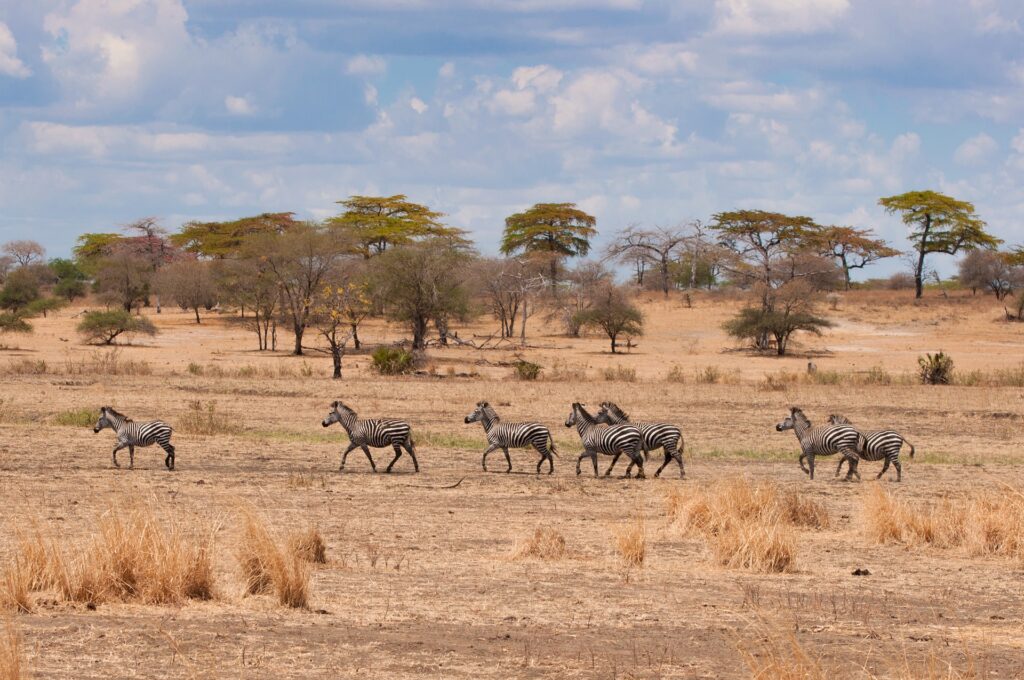
Then, show them a list of animals that are in the savanna. I actually created and printed out this page for students to peruse. It really helped them get their minds rolling with ideas. This page is also included in the printable lesson below.
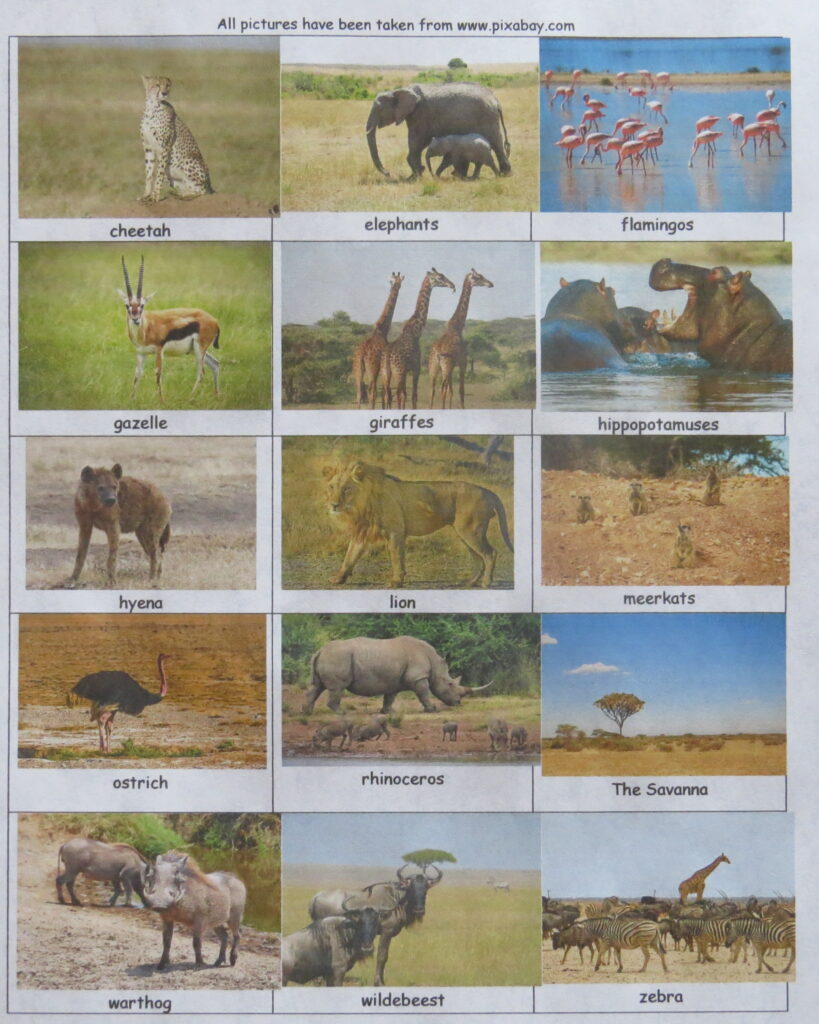
- Cheetahs
- Elephants
- Flamingos
- Gazelles
- Giraffes
- Hippopotamuses
- Hyenas
- Lions
- Meerkats
- Ostriches
- Rhinoceroses
- Warthogs
- Wildebeest
- Zebras
- etc.
Fourth, have the students brainstorm details about what the animals do, see, hear, smell, taste, feel and touch. Encourage them to think about what the animals’ ears or tails or doing, what the babies or moms are doing, what the dads are doing etc. Allow them time to think of many details. List their ideas on the board:
- Drink water, bathe or sit in the water…
- Roll in mud, Bat or swat flies with their ears or tail…
- Smell hunted animals left to eat…
- Lay down, rest, nap sleep…
- Walk, roam, chase, run, jump, leap, climb…
- Eat leaves, chomp, lick, bite, play…
Show the 5 Sections
- The Calm Savanna
- 1st Animals
- 2nd Animals
- 3rd Animals
- The Pacing Hyenas
As mentioned in the writing prompts introduction, K-1st Graders are encouraged to write 1 sentence for each section, 2nd Graders 2 sentences per section, 3rd Graders 3 sentences and so on.
Now to write!
Guide the students through the following steps so their story is organized and complete. They are free to write these ideas in their own words.
- First, begin the description by writing how the savanna seems calm. You can write about the weather, the landscape or mention what some of the animals are doing.
- Next, choose one animal to write about. Write 1-5 sentences about what the animal or group of animals is doing.
- Then, choose a second animal to write about. Write 1- 5 sentences about what the animal or group of animals is doing.
- Choose a third animal to write about. Write 1- 5 sentences about what the animal or group of animals is doing.
- Lastly, write again how the savanna appears calm. Then, describe how the hyenas look and what they are doing. Write in a way that makes the reader nervous or wonder what is going to happen next.
Sample Hooks to a Story
For example, a kindergartner might simply write, “But, the hyenas pace.”
An actual 1st Grader wrote, “Everyone was quiet, except the hyenas. With bone-crushing jaws, they paced back and forth at the edge of the open savanna.”
Print the Lesson
Easy Art Accents
These simple art accents motivate children to write and reward them for their work! In addition, they add color and charm to their writing.
Have your students complete any one of the following easy art accents OR come up with one on their own!
ZEBRA STRIPES
Use black marker to color in black stripes.
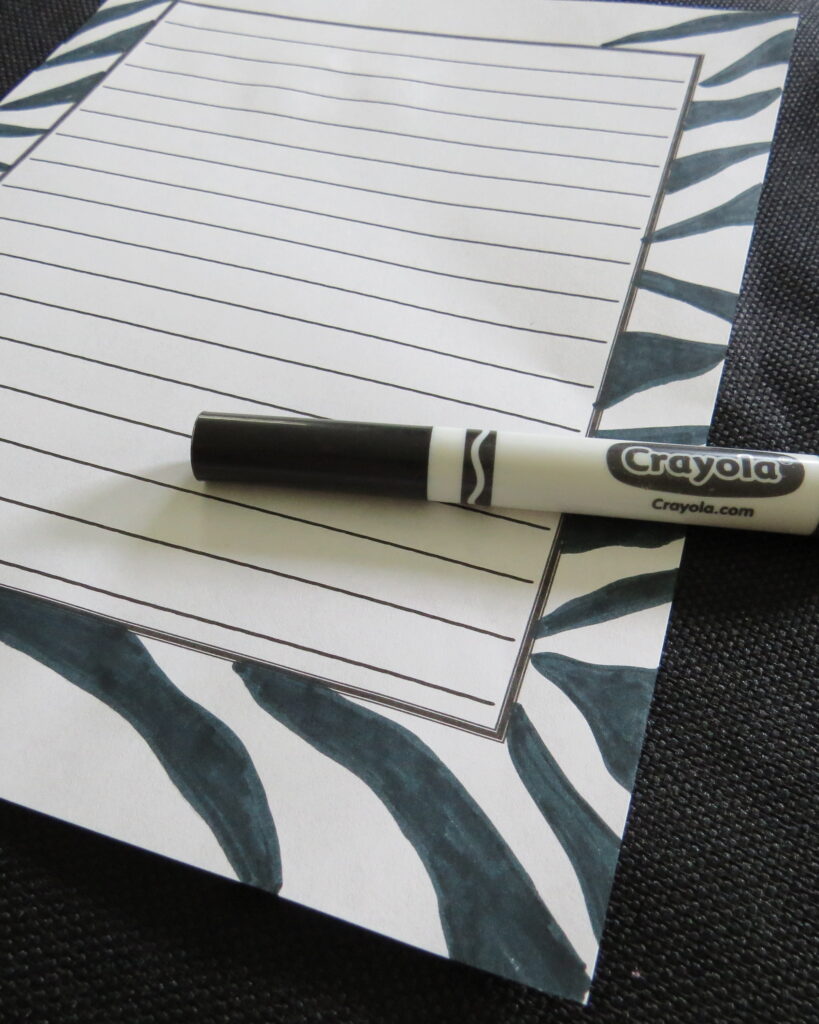
A LION’S MANE
Use yellow marker to fill in the border. Use brown marker or brown acrylic paint* to make the lion’s thick mane.
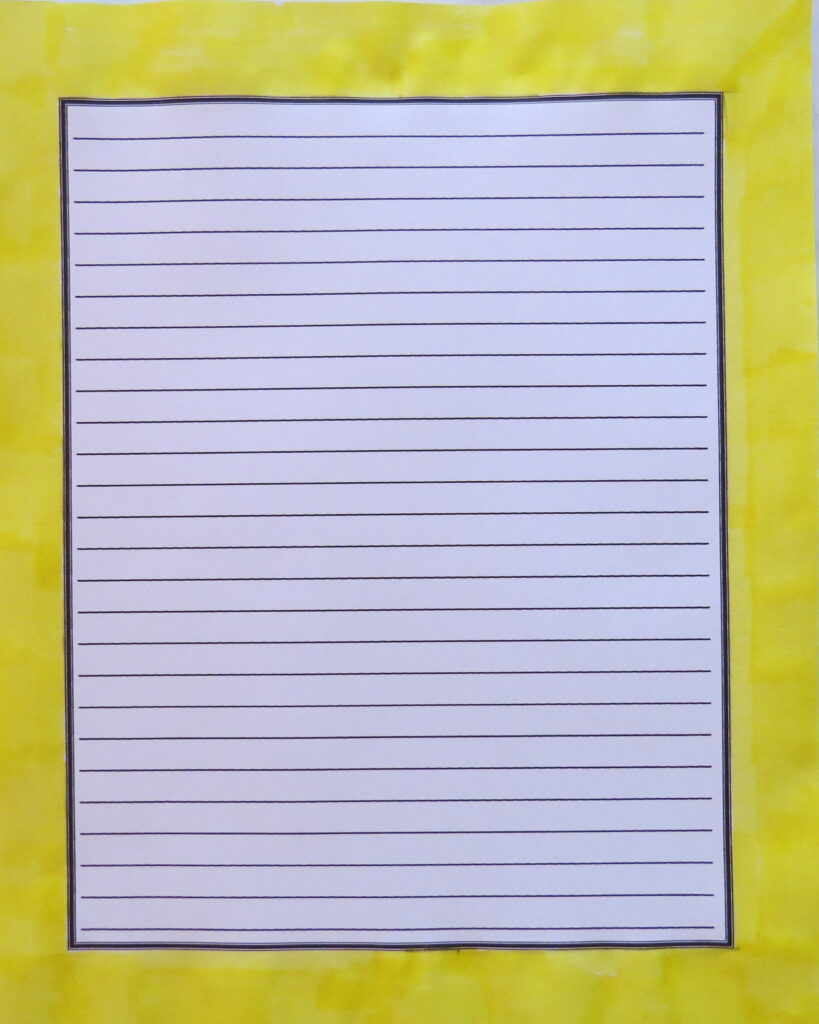
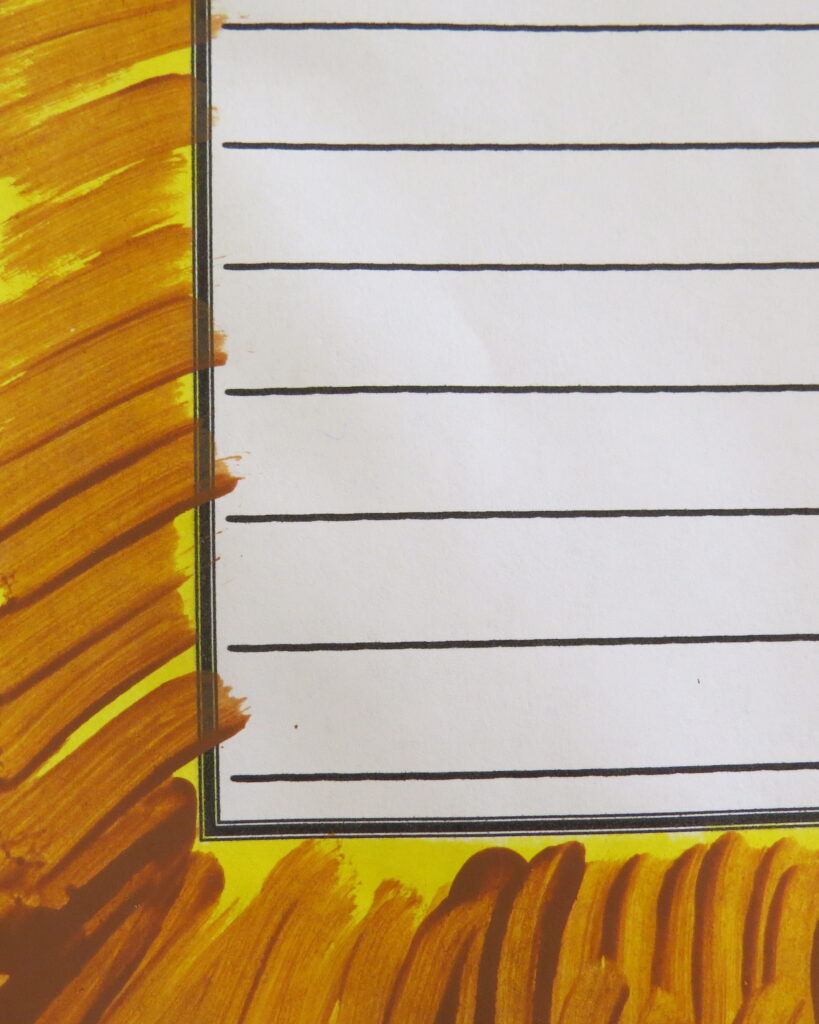
A CHEETAH BEHIND GRASS
First, use yellow marker to fill in the border. Next, use black marker to color black spots. Finally, use light green acrylic paint* to paint grass at the bottom of the story and on the left and right sides.

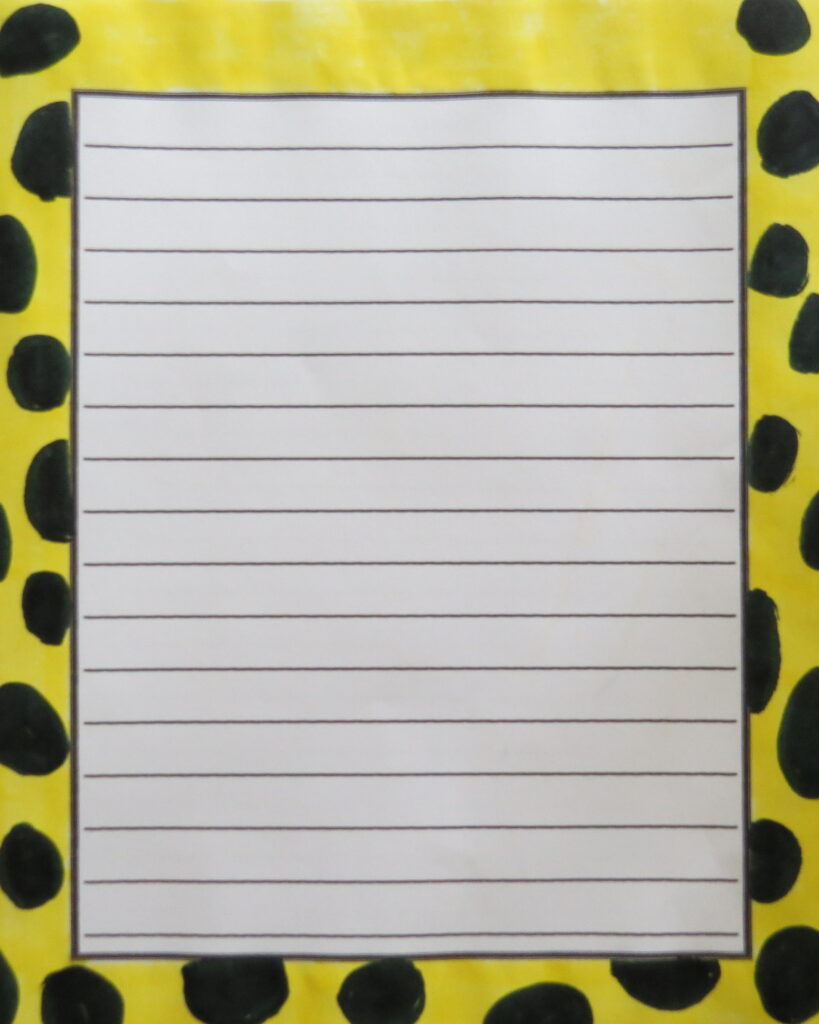
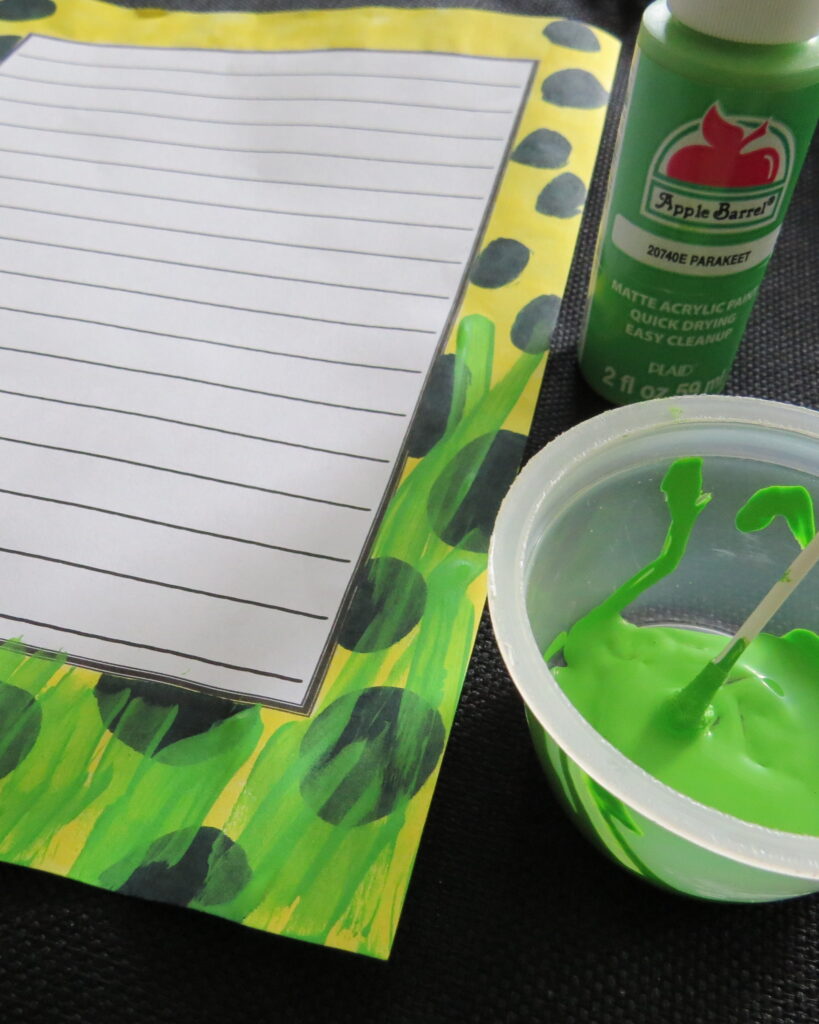
Student Samples
Also, you can encourage the students to write their title with marker, acrylic paint (writing with q-tips) or ABC stickers. Here are other variations that students came up with!


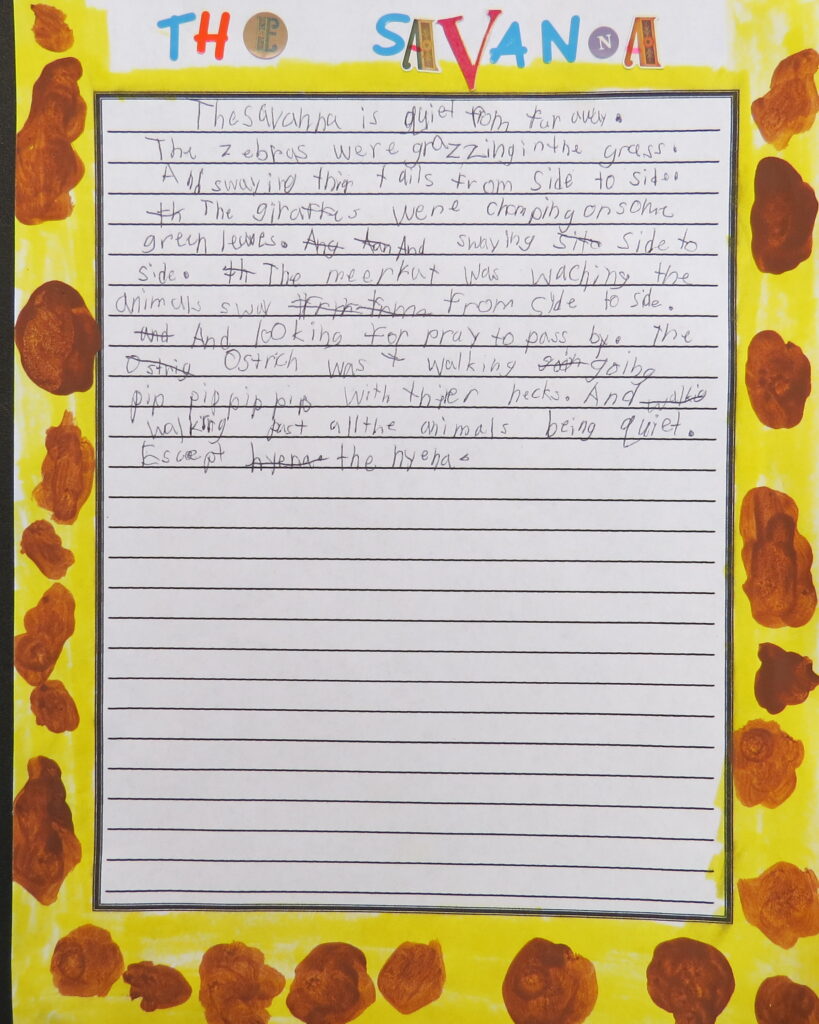
Games to Play!
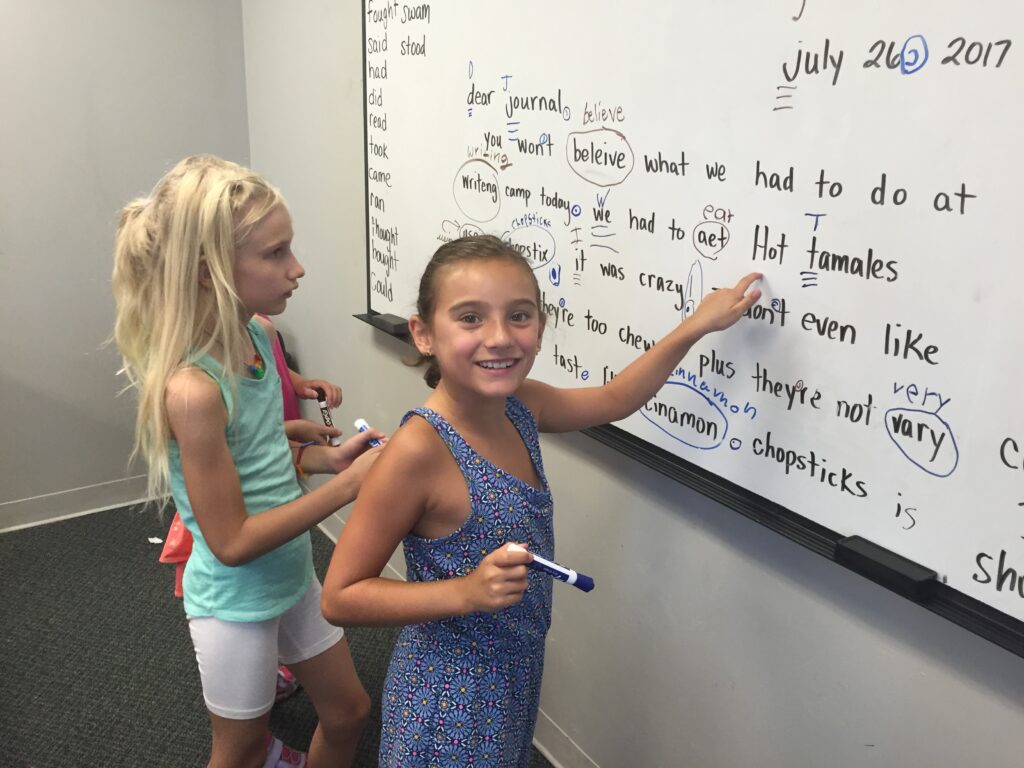
Word Scramblers-scrambling African animals.
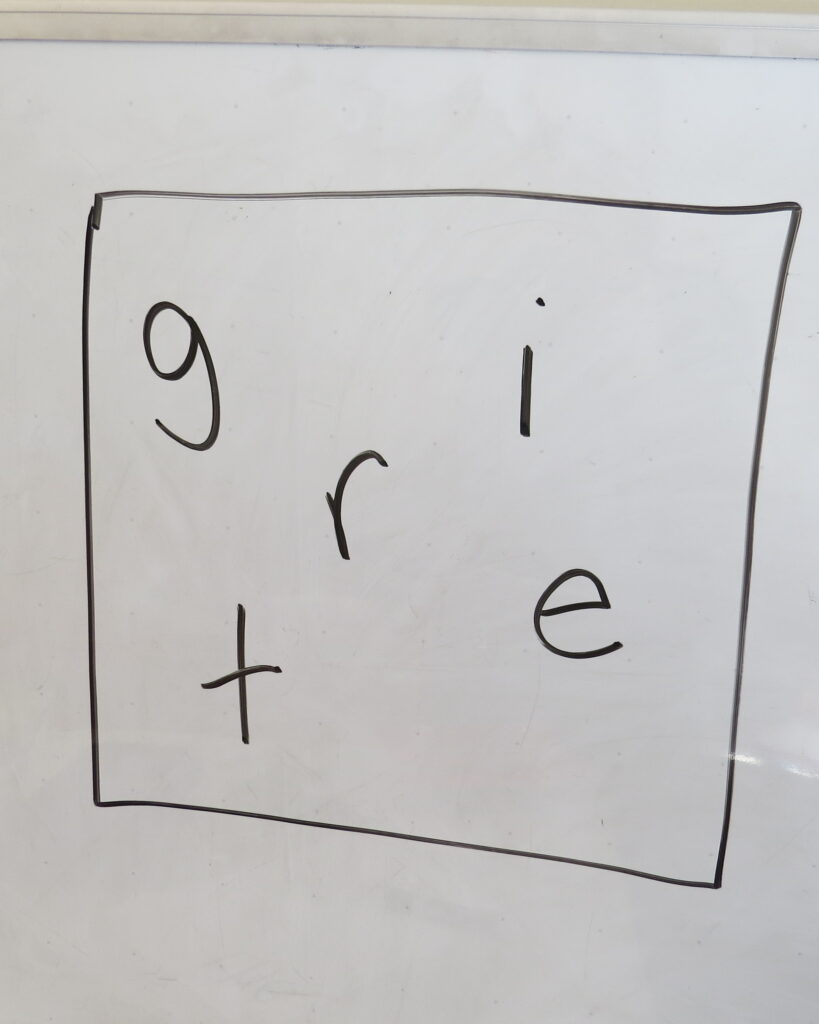
OR
Brainstorm. Erase. Guess listing animals that live in the savanna!

